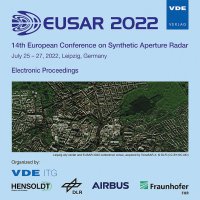Co-Production Active Learning for Operational Sea Ice Mapping
Konferenz: EUSAR 2022 - 14th European Conference on Synthetic Aperture Radar
25.07.2022 - 27.07.2022 in Leipzig, Germany
Tagungsband: EUSAR 2022
Seiten: 6Sprache: EnglischTyp: PDF
Autoren:
Ortiz, Macarena; Le, Triet; Bernstein, Elizabeth R.; McCord, Jacob W.; Sage, Philip; Schwartzkopf, Wade; McDonald, Bethany (National Geospatial Intelligence Agency, Research & Development Branch, Springfield, VA, USA)
Wendoloski, Eric B.; Slingerland, Philip C. (Aerospace Corporation, USA)
Darden, Alexandra (United States National Ice Center, USA)
Inhalt:
Intensified climate warming is extending ice-free conditions, and, in turn, increasing high-latitude maritime activity. This environmental shift, in conjunction with emerging satellite technologies and resulting Big Data streams, enhances operational pressure on organizations such as the United States National Ice Center (USNIC), who provides the U.S Government with sea ice charts for maritime safety of navigation and maritime-domain awareness. To advance technical capabilities, the National Geospatial-Intelligence Agency (NGA) collaborated with the USNIC on an R&D sea ice program, to develop Machine-Learning based algorithms, which include a tool that deploys Active Learning methods for sea ice classification using synthetic aperture radar (SAR) data. Active Learning algorithms are particularly advantageous because they selectively query users for additional labeled data, leading to effective learning strategies that require substantially less training data compared to traditional methods. We present the Human-machine-teaming tool (NOEL), which has shown a user need only label 5 image patches to achieve a 94% classification accuracy of ice/open water at native image resolution. In addition, NOEL is computationally efficient, requiring minutes to run with current USNIC computing systems. Lastly, we present the Ice Analyzer, a web-based tool which facilitates analysis of the sea ice products created by NOEL. Such advancements in which the NGA and USNIC are developing address current and future demands of a rapidly changing Arctic.


